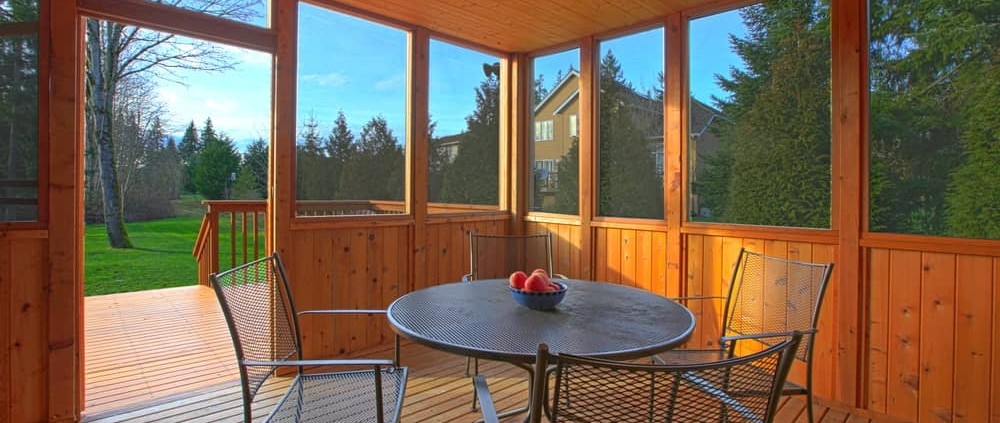How to Close in Bottom of Screen Porch?
A screen porch offers a delightful bridge between the comfort of your indoor space and the natural beauty of the outdoors. But what if you could enhance this area further, making it more private, comfortable, and usable throughout the year? Closing in the bottom of your screen porch does just that, transforming your open porch into a cozy, protected haven. This guide will walk you through the benefits, options, and considerations to take into account when undertaking this home improvement project.
Assessing Your Porch’s Current Condition
Before you begin, it’s crucial to assess the current state of your porch. Check for gaps in the screens, loose boards, or any signs of wear and tear that could worsen with time. Pay special attention to the roof and flooring, as these are critical areas that often bear the brunt of damage from the elements. A thorough assessment will help you understand the scope of work needed and prevent future issues.
Design Considerations for Screen Rooms
When planning to close in the bottom of your screen porch, design considerations play a pivotal role. Your choice of materials and structure should blend seamlessly with the existing architecture while providing the functionality you need. Whether you prefer a rustic look or a modern aesthetic, the design should reflect your personal style and complement your home’s overall appearance.
Options for Closing In the Bottom of the Porch
Installing Solid Knee Walls
Solid knee walls are a popular option for closing in the bottom of a screen porch. These short walls, typically constructed from wood or composite materials, provide a sturdy base for your screen panels and add a decorative touch to the porch’s overall look. Knee walls not only increase privacy and protection but also offer an opportunity to incorporate additional design elements like decorative stone or tile.
Using Vinyl Panels or Windows
For those seeking more flexibility, vinyl panels or windows can close in your porch while allowing you to adjust the level of exposure to the elements. During the colder months, closed panels can keep the space warm and protected, while open panels allow for a refreshing breeze in the summer. Clear vinyl windows maintain your view and sunlight exposure, whereas tinted options can offer reduced glare and added privacy.
Benefits of Closing In the Bottom of Your Screen Porch
Closing in the bottom of your porch comes with a host of benefits. It increases privacy, keeping prying eyes at bay while you relax. It also reduces the entry of debris, leaves, and unwanted critters, making the space easier to maintain and more comfortable to use. Moreover, it provides a barrier against the elements, allowing you to enjoy the porch in all seasons.
Comparing Sunrooms and Screened Porches
When considering closing in your porch, it’s helpful to understand how this changes the space’s dynamics compared to a traditional sunroom or a typical screened porch. Sunrooms are fully enclosed and often climate-controlled, offering a year-round living space with full protection from the elements. Screened porches, while offering a degree of protection, still expose you to the outdoor temperatures and weather. By closing in the bottom of your screen porch, you’re taking a step towards the comfort and usability of a sunroom while maintaining the charm and open-air feel of a screened porch.
Keeping Your Enclosed Porch Warm in Winter
To keep your newly enclosed porch warm and cozy during the winter, consider adding insulation to the knee walls and using weather-resistant materials. Additionally, portable heaters or ceiling fans with a heating function can provide warmth without the need for extensive renovations. Thick curtains or blinds can also help retain heat, ensuring your space stays comfortable even when the temperature drops.
Maintenance and Care
Maintaining an enclosed porch is similar to caring for any other part of your home. Regularly clean the windows or panels, inspect the structure for any damages, and ensure that all seals and weather-stripping are intact. Promptly addressing any issues not only prolongs the life of your porch but also ensures it remains a safe, enjoyable space for years to come.
Navigating Building Codes and Permits
Before you start your project, it’s essential to understand your local building codes and acquire the necessary permits. These regulations ensure that your enclosed porch is safe, structurally sound, and compliant with local standards. Consulting with a professional or your local building authority can provide you with the guidance needed to navigate this process smoothly.
Conclusion
Closing in the bottom of your screen porch is a fantastic way to enhance your living space, offering a perfect blend of indoor comfort and outdoor enjoyment. By carefully assessing your current porch, choosing the right design and materials, and understanding the benefits and maintenance involved, you can transform your porch into a beautiful, functional area that adds value to your home and your lifestyle. Whether you’re sipping your morning coffee or enjoying an evening with friends, your enclosed porch will provide a comfortable, inviting space for every occasion. So why wait? Start planning today and step into a new level of home comfort and enjoyment.




